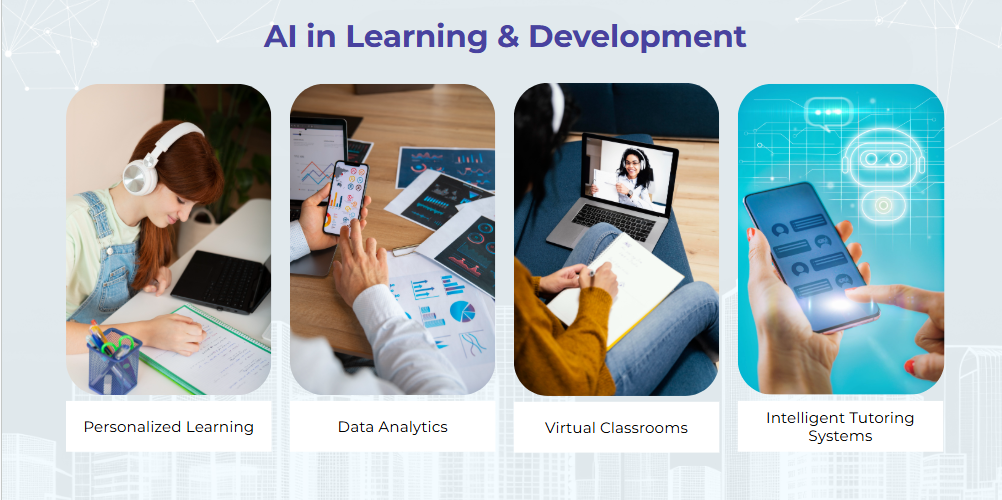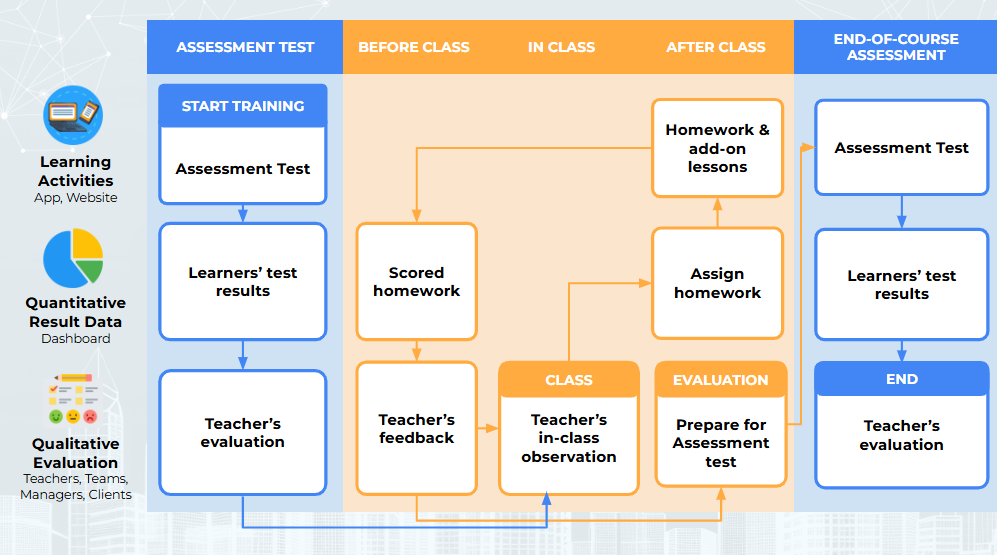Artificial Intelligence (AI) is revolutionizing corporate training, offering personalized learning paths, real-time feedback, and scalable solutions. However, the challenge lies in maintaining the human element in communication training while recognizing AI’s current limitations.

Kiểm tra phát âm với bài tập sau:

The Role of AI as a Tool
Think of AI as a modern tool, much like the stone tools of ancient times. Both were created to extend human capabilities. The true power of AI lies in how we use it—leveraging it to simplify tasks, enhance skills, and solve complex problems. In corporate training, AI empowers HR and Learning & Development (L&D) professionals to deliver tailored language training while keeping the human connection central.
AI applications in L&D are diverse, including:
Personalized learning tailored to individual needs.
Data analytics for insights into learner performance.
Immersive learning overcoming geographical barriers.
Intelligent tutoring systems to complement traditional methods.

Early adopters of AI and virtual reality (VR) in L&D have reported a 57% increase in efficiency and a 52% boost in productivity (HRO Today, 2023). By handling routine tasks, AI allows human trainers to focus on creativity, critical thinking, and empathy.
Combining Qualitative and Quantitative Data
Effective training measures both qualitative and quantitative data. Together, they offer a comprehensive view of learner progress and program effectiveness.
Qualitative Data: The Human Touch
Qualitative data captures nuances in learner behavior, such as confidence in speaking or the ability to apply skills in real scenarios. Observations by trainers, managers, or colleagues provide invaluable insights into learners’ adaptability and performance. For example:
Confidence: How comfortable are learners during presentations or group activities?
Real-world application: How well do learners transfer classroom skills to meetings or client interactions?
Quantitative Data: Objective Insights
Quantitative data, such as assessment scores and progress metrics, provides measurable outcomes. Technology significantly reduces the time spent on evaluations. For example, automating assessments that would traditionally take hours can be completed in seconds. Studies show automation can save employees up to 6 hours per week and reduce time spent on repetitive tasks by nearly 70%.
A Blended Learning Model in Action
Here’s how AI integrates qualitative and quantitative methods in a typical training program:

Entrance Assessment:
Learners’ skills are evaluated using AI-driven tools, providing scores for pronunciation, grammar, and vocabulary, alongside predictive scores for IELTS, TOEIC, and CEFR.
Course Progress:
Learners complete assignments on AI platforms, with progress visualized through dashboards. Trainers use these insights to adjust teaching strategies and ensure personalized learning.
End-of-Course Assessment:
AI tools measure improvement, while trainers combine this data with observations to refine future training programs.
Automation streamlines tasks like assessments, progress tracking, and scheduling, freeing trainers to focus on interactive, engaging activities.
Conclusion
By balancing AI’s efficiency with the human touch, corporate training can achieve impactful results. As data becomes a cornerstone of education, understanding how to leverage it effectively is key. When used thoughtfully, AI allows educators and businesses to focus on strategy, creativity, and meaningful human connections—ensuring the best outcomes for learners and organizations alike.
Explore ELSA Business Solution: https://vn.elsaspeak.com/b2b/business-en/?utm_medium=email_mkt
 16/01/2025 |
16/01/2025 | 







